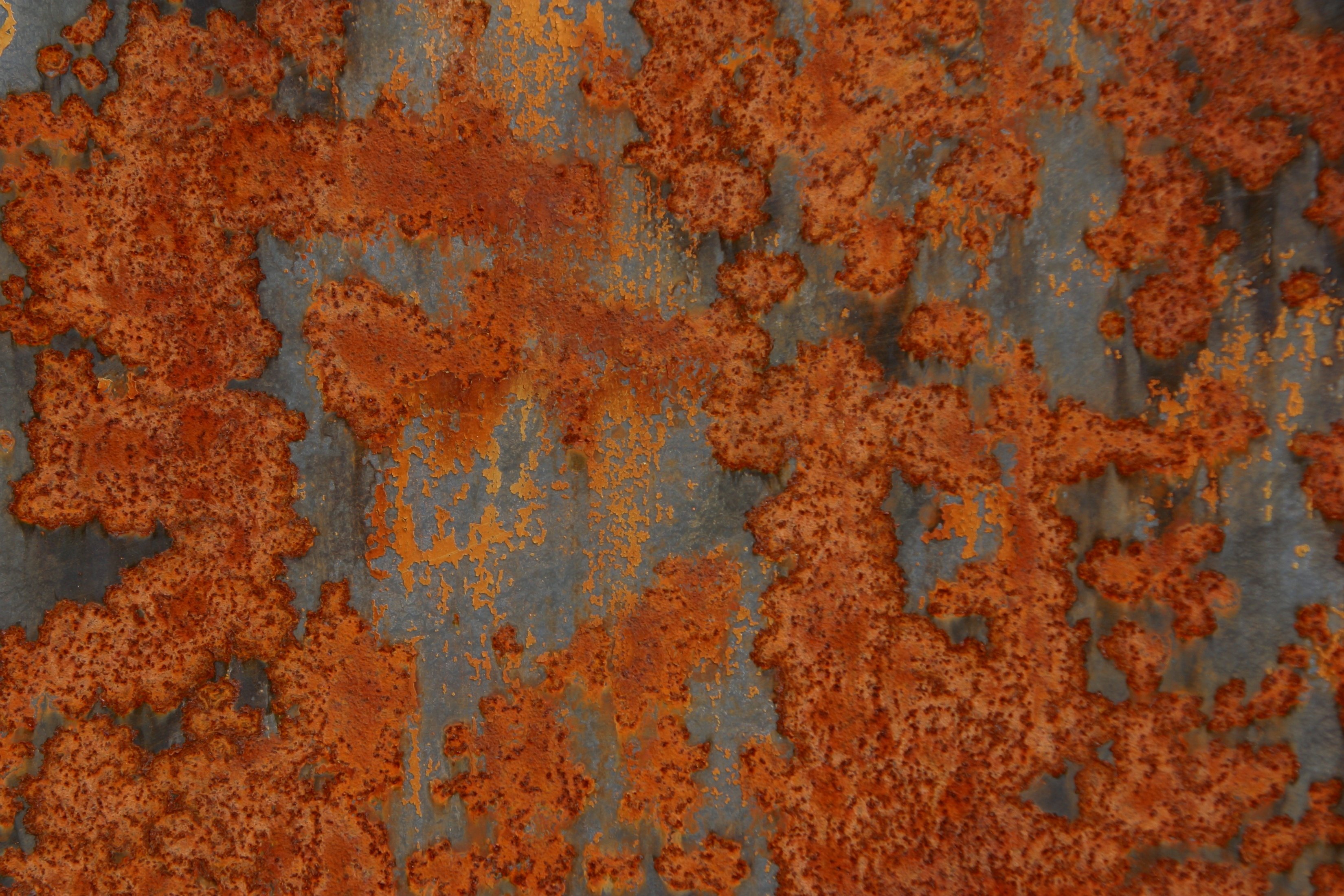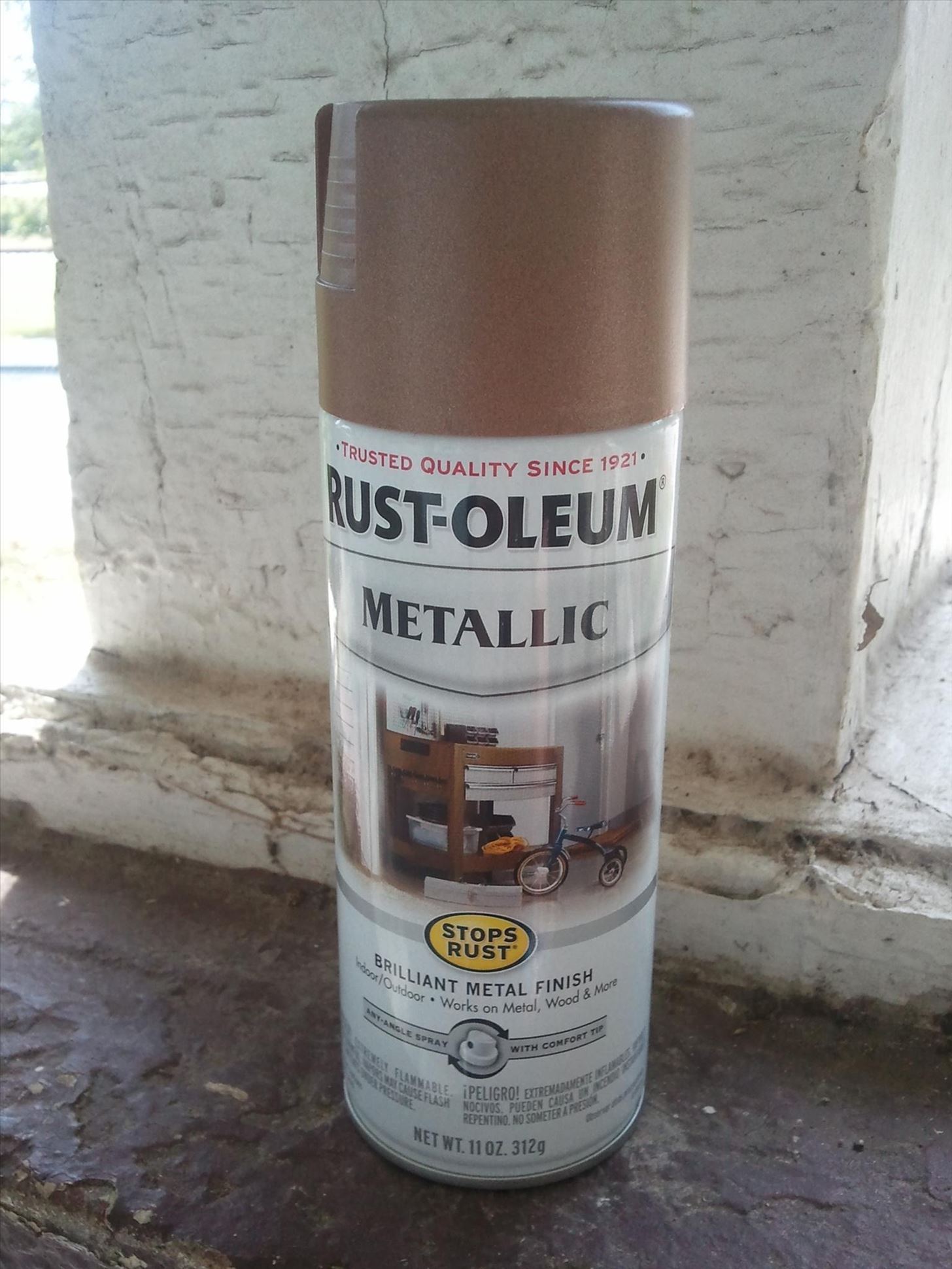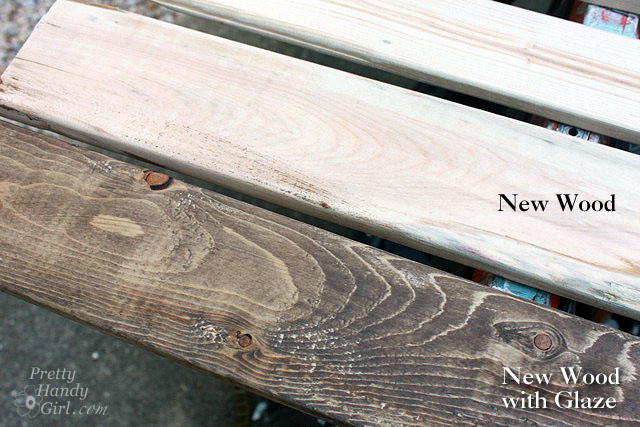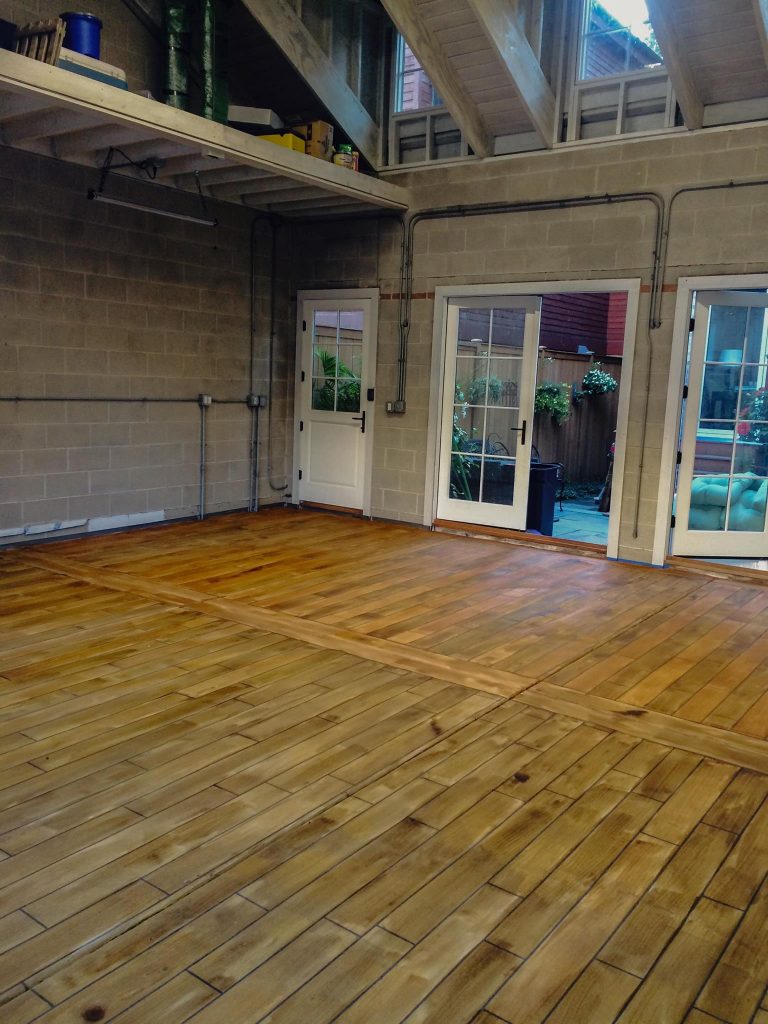Apply the wash in thin layers and build up as needed to get the look you want. After this dries, you can dry brush the raised edges and corners with a lighter color of the base coat color, or the base color mixed with a dash of off-white. This makes things look old very quickly so apply sparingly. If you're preparing your metal surface for painting – let's make it simple and quick for you.
All you need to do is grab a wire brush, a scraper and some cleaner/degreaser. Remove grease, oil and other surface contaminants by cleaning with appropriate detergents (something like Rust-Oleum Mathys ND14 Cleaner Degreaser is ideal). Then remove rust scale, loose mill scale, loose rust and loose coatings by scraping, wire brushing and sanding. This will leave you with a smoother surface to paint over and helps to ensure adhesion, don't worry though you don't have to remove ALL the rust! Finally, sand any previous coatings which are in good condition to roughen the surface slightly.
Before you can begin priming and painting your project, you'll need to remove all of the rust and begin with a clean slate. If you don't, your new paint job will have an uneven surface and risk peeling. Effective tools to use on rusted metal include wire brushes and sandpaper. Run a wire brush gently over the rust a few times or until all of the rust flakes away. Next, rinse the area with warm water and wipe with a soft cloth to get rid of excess grime and grease that might be leftover from the rust damage.
If the surface still has extensive rust after all loose rust has been removed, start with Krylon® Rust Protector™ Rust Converting Primer or Krylon® Rust Tough® Rust Fix. This primer chemically changes rust into a waterproof, paintable surface. Spray directly over the remaining rust to protect against further corrosion. Apply multiple thin coats to prevent runs and drips. This primer sprays on clear and dries to a black primer finish. After 24 hours, topcoat with your choice of paint color.
Surface can be sanded lightly before applying topcoat, if desired. Rusty Paint is an imported anti-corrosive flexible paint, which contains a special triple mix of fine metal fragments enclosed within a specialist solution. This paint is applied by a roller, paintbrush or spray gun and left to dry. Once cured the top surface is sanded to expose the specialist fragments, which when exposed to the elements, create real rust.
The rusting process however can be sped up significantly by applying our special rust accelerator. The product can be layered and applied in a textured format to achieve a desired finished result. First paint your object the base color that you want. Once an object has been exposed long enough to the elements, the original color will be unrecognizable anyway. Paint the object with a spray paint that is not water soluble. We do not want our rust effects to remove the base coat.
If you go with a glossy or semi-gloss base coat, the wash will tend to wander into the deepest cracks and recesses and avoid the high points. A flat sheen base coat will cover the surface with a more even layer of rust. Either can be good, so don't be afraid to experiment.
Working in a well ventilated area, pour the peroxide into the spray bottle. Spray the tin or iron with peroxide, misting generously. Rusting should begin almost immediately, and is sort of fun to watch. Allow items to dry completely, and then rub to remove salt. Different effects can be achieved using more or less salt.
I also achieved some nice rusting by letting the items dry, and then remisting them with peroxide to start the process all over again. Rinsing the rusted item in cold water removes some of the rust, and gives a smoother surface. This is definitely a technique to experiment with fully before you plunge in with a big piece. One of the things that really sells an old piece of metal is rust.
There are many colors that can be used for rust, and you should experiment with as many as possible, but it's hard to go wrong by starting with good old fashioned burnt sienna. Similar to the metallic layers, this acrylic paint was applied with a gross old brush in a scratchy, subtle manner. Then I used my finger to smear it a bit, blending it in with the other paints.
Once this base coat of dull, dark paint dried, then the real fun began. Yes I said earlier that we wouldn't see any silver spots, but don't worry, I was incredibly subtle with my use of this bright paint. I applied just a little bit of silver paint to a ratty old brush, wiped most of that paint off on a paper towel, and then "scratched" the bronze base coat with the brush. When exposed to rain, sun, and outdoor elements over long periods, metal patio furniture will eventually rust. Painting rusted metal furniture is a simple DIY project that can quickly make tables and chairs look good as new.
However, paint won't stick to dirty, rusty surfaces, so you'll have to remove the rust before adding your favorite paint color. I've covered metallic finishes here on Tested before, but this was a very different beast. It couldn't look chromed and shiny like Rey's blaster. It needed to be dark, textured, rusty, and grimy. We will use the techniques of "the wash" and "the dry-brush" as discussed in earlier articles to achieve the desired rust effect.
If, after you have finished, you want a more textured effect, add some silica/sand to the paint to roughen it up and create a true rusted feel to your project. Use the Warm Caramel spray paint to do a mist coat of paint on the bells. To do a mist coat you will need to do little puffs of paint by pushing down on the nozzle briefly.
When I painted mine I pushed down on the nozzle for 1 second or less at a time. If you get too much of this color in one spot, don't worry, it'll be easy to fix later. You will also want to make sure you are further away from the bells so that just a little bit of the mist is hitting the bells.
This is not really a frequently asked question, but from time to time we do have the odd person which may be struggling to follow the instructional steps. The ONLY reasons which would prevent the product from rusting would be mixing, sanding or degreasing. Secondly the sanding needs to be done as per the above videos, the videos will help explain what you are looking for with regards to 'colour change' 'specs' and 'sheen'. Finally, if the project hasn't been fully cleaned and degreased after the final sanding, any left over sanding dust will prevent the rusting process .
All the above problems , can be rectified simply by revisiting the simple instructional steps. If you want the object to have a slight suggestion of metal to its nature, dry-brush a thin layer of the silver acrylic across the surface. This will deposit the metallic specs in the paint across the surface for a subtle sheen. This works best with flat or semi-gloss base coats. Catching the hard edges with the silver will make them stand out as well, although you will probably be rusting them out later.
It is the second Wednesday of the month, so you know what that means Monthly DIY Challenge time!!! This month we have partnered up with Modern Mastersto bring you 12 ways to use patina paint from their Metal Effects collection. With my sons bedroom being more on the rustic side, choosing the iron paint with the rust activator was the perfect choice to create a rusty look to a metal letter. It's vital to inspect the rust thoroughly before you begin painting simply because you don't want to waste your time. If a piece of rusted metal is too far gone, no amount of prep and primer will be able to bring it back to life. With that final touch, the helmet was screwed together and completed!
How do you make paint look rusty This was a wonderful learning experience and a lot of fun. The best part about this finish is that it didn't require any special tools or materials. Just some spray paint, crummy brushes, a handful of acrylic paints and a little varnish. On that note, here's some paper that has been created by pressing it between sheets of metal rusted using this technique. Spray the rusty metal sheets with water, lay the paper between them, and walk away. Your mileage may vary, depending on how humid it is where you live.
Scrub partially rusted metal areas with a wire brush to remove flakes and powdery surface rust, then prime with a rust-inhibitive primer. Before you begin this outdoor project, make sure the rust hasn't damaged the structural integrity of the item. Small spots of rust are likely manageable, but large corroded areas might not be salvageable.
If the frame remains sturdy, use the following steps to paint rusty metal furniture, including pieces made from aluminum, iron, and steel. So, what is the best primer for coating that rusted metal roof? There are quite a few good products on the market, but my favorite is the Rust-Oleum High-Performance Rusty Metal Primer.
Its formula is made specifically for rusted metal surfaces and it stops rust where it is so it can't continue spreading and ruin your new paint job. Even if you're a newbie when it comes to DIY projects, painting over rusted accessories or patio furniture doesn't have to be as daunting as it sounds. Each piece is different, so follow these steps to ensure a successful DIY project for your home. Here are some professional tricks of the trade for painting over rusty metal. The best rust effects can be created when the can has been shaken for 3 mins, on pre-primed surfaces that are clean, dry, and free of dust and oils.
To take the effect further, apply your favorite Montana GLITTER Spray or metallic pigments for a more metallic look. You can create a rusty vintage tin shed roof, beautiful old doors for garden features, outdoor mirrors, bird cages, bird feeders, garden furniture and water features. Or transform a new moulded cement statue to a rusted, antique-looking finish with Rustique™ spray on rust paint. Pour two cups of hydrogen peroxide, four tablespoons of white vinegar, and one-and-a-half teaspoons of table salt into a plastic spray bottle. Once the salt has dissolved, spray the solution over the object to coat it partially or completely, depending on the desired effect.
The peroxide should begin to bubble on contact with the metal, and rust will start forming immediately. Let the object air-dry in the sun for another five minutes or longer, depending on the size of the object. Aged textures on metal may sometimes defeat the artist who is unsure of how to capture the texture of rust or peeling paint. Sensitive colour mixing is not always enough to suggest rust, and in some cases will merely make the object appear brown or orange. This situation is not helped if the paint is applied evenly and with uniform brush marks.
The secret to painting rusty objects effectively lies partially in colour-mixing; the rest is down to how the paint is applied. Creating simulated rust on your hot rod is not a complicated process. It is mostly a matter of layering different colors of paint to create the final look. As most cars have iron or steel in their frames, the most convincing rust effect is simulated iron oxide, which uses a number of colors in the red/orange/brown family.
Before you begin it's a good idea to take a close look at real rust to see how the colors work together. 2) Paint a base coat of white acrylic latex paint on the object receiving the rust effect. Sprinkle clean sand over the random areas on the object while the paint is still wet, and allow it to dry for a minimum of 12 hours. Applying sand will give the object the look of oxidation or rough areas where rust forms. This step is optional, and is not absolutely necessary if you do not want the rough texture. This altered book layout uses a variety of rust techniques.
Some of the items, such as the license plate and the some of the metal pieces in the niche, have been rusted by nature. The background papers were created using the rusty metal sheet method described above. Some of the items in the niche have been rusted using commercial products. On a whim, I decided to try using the Iron Surfacer as a base coat, and then applied Technique #1 to it—I sprayed it with peroxide, and then sprinkled with salt. The result was a lightly rusted piece, with a great deal of texture from the salt. Rather than remove the salt completely, I left some of it, which made great dirt in my grooves.
This might be a good way to cut the cost of using the more expensive prepackaged products, and still get a good result. Paint your piece with the Iron Surfacer, then wait for it to dry. Don't worry about getting it on completely even, or about using too little paint—I dry brushed my frame, and got great results. Be aware that the Rust is a reactive agent—it's actually a liquid chemical compound that is going to react with the flecks of metal in the surfacer.
Although this process is significantly faster than Mother Nature, it does take a little time. Don't worry if you don't see rust the moment you put Rust on your piece. Mix 2 parts bleach to 1 part vinegar in the plastic mixing container. Wait at least 30 minustes, then carefully remove the items from the solution and let dry. When items are dry, brush off as much or as little rust as you like to achieve the desired effect.
Seal with spray finish—I used a matte spray sealer. The first step is to clean off loose rust and flaking paint and then apply a rust-inhibitive primer. You don't need to get down to bare, shiny metal—just clean off the flakes and powdery surface rust that prevent paint from adhering. However, badly rusted metal areas need more prep work and possibly a special primer. I started my DIY rusty fall decor project with several glass items purchased at Goodwill.
I don't use Slick Stick on everything, but it is an awesome problem solver when you need it. Slick Stick bonds nicely to glass, helping the Dixie Belle Patina Paint adhere better to the slick surface. Apply two coats of metal-approved spray paint in your color of choice.


























No comments:
Post a Comment
Note: Only a member of this blog may post a comment.